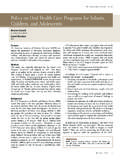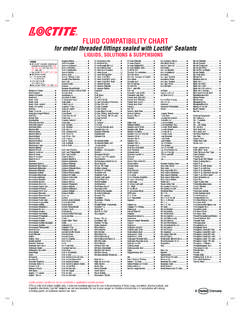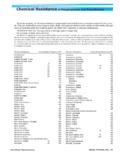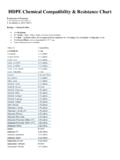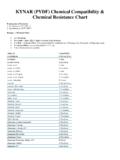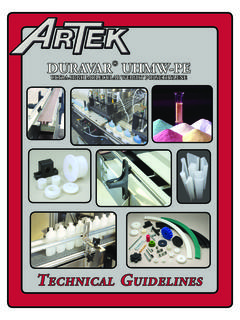Transcription of Silver Diamine Fluoride in Pediatric ... - Pediatric Dentistry
1 CROSS-SECTIONAL STUDY 212 Silver Diamine Fluoride IN RESIDENCIES21 SILVSER 1 DLSALVMRRRRRNRFURORDCRFRRRRRTIMRORraDRRv iOCurriculum standards for Advanced Specialty Education Pro- grams in Pediatric Dentistry are set by the Commission on Dental The standards call for programs to pre- pare residents beyond the level of general dentists. As a result, curriculum decisions in these specialty programs represent the leading edge of dental education and may be an indication of changes to come in undergraduate dental education and dental hygiene curricula more a 2009 position paper by Casamassimo et al., wide va- riations in teaching practices were found across Pediatric den- tistry residency programs.
2 The authors recommended increased standardization of didactic and clinical education to better meet the needs of the In terms of dental caries manage-ment curriculum, Ramos et al. suggested teaching residents contemporary disease management protocols by combining new didactics and applied learning in community-based Surprisingly, among papers on changes in preventive care for children, there is no meaningful discussion of curriculum changes in Pediatric dental residency Silver Diamine Fluoride ([Ag(NH3)]2 F); SDF) has been used for decades by dentists in Japan and other coun- tries to arrest dental Until recently it has not been used in the United States, although some have reported applying Silver nitrate (AgNO3) followed by Fluoride SDF is low cost and easy to apply and has been shown to be effective for caries arrest and prevention in international When decayed teeth are treated with SDF, a precipi- tate of Ag3PO4 forms an insoluble layer on the softened dentin.
3 The exact mechanisms of action are not fully understood; how- ever, caries arrest likely results because cariogenic bacteria are killed by the Silver compounds, and colonization is reduced because the pathogens are unable to form a biofilm on SDF- treated dentinal The Fluoride ion facilitates reminer- alization, with formation of fluorapatite from the original hy- droxyapatite The insoluble crust, which forms after treatment, also serves as a Fluoride reservoir for reducing the impact of acid challenges and increases dentin ,19In the summer of 2014, SDF was cleared by the Food and Drug Administration. It became commercially available the following spring. Like Fluoride varnish, its label indication is desensitization for use on individuals over 21 years of age.
4 However, several large clinical trials have shown the effectiveness and safety as a caries control agent in young children and that it can be used legally off-label by licensed Si- milarly, off-label use of Fluoride varnish has become the gold standard of caries prevention and early caries ,21 SDF promises to outperform Fluoride varnish for caries arrest and to become an invaluable tool for caries prevention and man- Understanding current use and teaching practices is a prerequisite for curriculum change and practice purpose of this baseline study was to document cur- rent practice, teaching, and perceived barriers to use of SDF and other caries control agents in Pediatric Dentistry resi- dency Pediatric Dentistry residency program directors (74 sites) and associate program directors (Lutheran Medical Center residency program, 13 sites; n equals 87) were surveyed.
5 Contact information was obtained from Drs. Nelson and 2 Scott are clinical assistant professors, Department of Pediatric Den- tistry, 4Dr. Berg is Dean, School of Dentistry , and professor, Department of Pediatric Dentistry , and 5Dr. Milgrom is professor, Department of Oral Health Sciences, and ad- junct professor, Department of Pediatric Dentistry , all at the University of Washington, Seattle, Wash., USA; and 3Dr. Crystal is clinical associate professor of Pediatric dentis- try, College of Dentistry , New York University, New York, , USA, and senior specialist, Comprehensive Pediatric Dentistry , Bound Brook, , USA. Correspond with Dr. Nelson at Silver Diamine Fluoride in Pediatric Dentistry Training Programs: Survey of Graduate Program DirectorsTravis Nelson, DDS, MSD, MPH1 JoAnna M. Scott, PhD2 Yasmi O. Crystal, DMD3 Joel H.
6 Berg, DDS, MS4 Peter Milgrom, DDS5 Abstract: Purpose: The purpose of this study was to investigate practice, teaching, and perceived barriers to the use of Silver Diamine Fluoride and other caries control agents in Pediatric Dentistry residency programs. Methods: A 14-question survey regarding use and teaching of caries control agents was sent via email to residency program directors in 2015. Survey participants responded, using a web-based survey tool, by completing a paper and pencil survey instrument, or by interview. Results: Surveys were completed by 74 directors or associate directors (87 percent adjusted response rate). More than a quarter ( percent) reported use of Silver Diamine Fluoride , with percent expecting to increase use. The use of Silver Diamine Fluoride was not associated with region or program type. Programs reported commonly used caries control agents of Fluoride varnish (100 percent), acidulated phosphate Fluoride foam ( percent), Silver nitrate ( percent), and povidone iodine ( percent).
7 Most felt Silver Diamine Fluoride should be used only with high-risk patients ( percent), and the majority agreed it could be used in primary and permanent teeth. The most frequently reported barrier to use of Silver Diamine Fluoride was parental acceptance ( percent). Conclusions: Silver Diamine Fluoride is being rapidly adopted in graduate Pediatric Dentistry training programs, with the majority expecting to incorporate it into their teaching clinics and curricula. (Pediatr Dent 2016;38(3):212-7) Received February 16, 2016 | Last Revision March 27, 2016 Accepted March 28, 2016 KEYWORDS: Silver Diamine Fluoride , FLUORIDES, DENTAL CARIES, SURVEYS AND QUESTIONNAIRES, Pediatric DENTISTRYPEDIATRIC Dentistry V 38 / NO 3 MAY / JUN 16 Silver Diamine Fluoride IN RESIDENCIES 213 Survey methods. The staff of Advantage Dental Services in Redmond, Ore.
8 , USA, with experience in patient case manage- ment and research, administered the survey. An initial survey announcement email from the investigative team was sent to each program director on July 24, 2015. Survey participants responded by either using a web-based survey tool, completing a paper and pencil survey instrument, or interview. The intro- ductory email contained a personalized cover letter on Uni- versity of Washington letterhead, a Microsoft Word (Microsoft, Inc., Redmond, Wash., USA) survey attachment, and a link to the web-based survey. Four weeks after the initial mailing, a reminder email was sent to all directors who had not yet responded. A second and final email reminder was sent eight weeks after the initial mailing.
9 One week after the second reminder, the remaining directors were contacted via telephone and provided survey materials if they chose to participate. The end date of the survey was November 30, 2015. Completion of the survey served as implied consent. The Institutional Review Board of the University of Washington determined that the survey was instrument. The questionnaire included 14 items relating to use and teaching of caries control agents in Pediatric Dentistry residency programs. Questions included Likert-style, multiple choice, and fill-in responses. Directors were queried regarding the location and type of their program, their own practice experience, and years in the director position. Several questions covered current use, teaching, and expectations for future use of caries control agents.
10 Other survey items investi- gated perceived indications for use of SDF and barriers to im- plementation in residency clinics. Finally, respondents were asked about specifics of use within their institution, including the protocol for application. Data analysis. Responses were tabulated in Microsoft Excel (Microsoft, Inc.) and subsequently analyzed using Stata statistical software (StataCorp LP, College Station, Texas, USA). Frequencies and percentages were calculated for each survey item. Logistic regression was used to test bivariate asso- ciations with current use of SDF and program were obtained from 74 residency directors or associate directors. The raw response rate was percent, and the re- sponse rate adjusted for missing contact information was percent.



